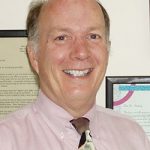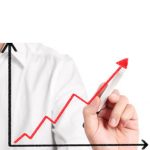January 2018
Spotlight of the Month

Thomas F. Armstrong, DDS
Bakersfield Smiles, Bakersfield, CA
As a general dentist for many years, it is always fun to see what opportunities are available to increase the range of services that can be provided for patients. Adding oral appliance treatment for Sleep Apnea and Snoring is one of the most exciting new ways my team and I have found to improve patient’s lifestyles and help our practice stand out in the community.
Dental sleep medicine has opened up so many associated journeys over the years, and has made me appreciate the power of good sleep as a foundation of overall health. That is a key message that we try to help our patients realize as part of their sleep apnea treatment.
Favorite success story:
- • When you decide to take the red pill and jump into the “rabbit hole” of sleep, there are so many challenges that come along the way. Besides the logistics of paperwork and billing insurance (if you do this), there are the specifics of each type of oral appliance, how to present cases to patients, the actual process of fabricating and adjusting appliances, and the unique needs that each patient has.
- • I think that when you score a “home run” in taking a patient from a severe level of OSA to a much lower and healthier range, everyone in the office (along with the patient) is so excited. We have had several great successes in this way, with AHI’s going from the low/mid 90’s to 10 or less. That is what makes dental sleep medicine so much fun!
Tips for Treating Sleep in Your Office:
It should be obvious to members of this group that dental sleep medicine is far from a “slam dunk”, no matter how it is presented at courses. As with any aspect of dentistry that we deal with, there are many shortcuts, tips, and tricks that you learn along the way. Some are learned from specific classes, but probably even more are gathered from our colleagues and forums like this one.
- As you move along the journey of sleep, it is funny that many times other dentists are so focused on which device one is using, as if there is a “magic” appliance that works perfectly for everyone.
- • The reality is that every appliance works – in the right situation. Become familiar with several and learn their particular idiosyncrasies and best uses. This way, you can discuss a variety of approaches for each patient and select one that is ideally suited for them.
- Get your team involved! Treating Sleep Apnea patients with oral appliances is great to turn over to trained dental assistants. So take them to classes, print out various articles on sleep and sleep disorders, and allow them to gain experience in adjusting, modifying, and repairing appliances. Let them spend time with patients, and you can step in for a moment to answer questions and then get back to something else.
- • My experience is that assistants can handle most of the process of our dental sleep treatment, from initial interviews with new patients, delivering appliances, managing follow up appointments, and setting up home sleep testing as needed. This delegation frees you up and gives them unique skills that most staff do not have.
- Understand that the idea of oral appliances, or CPAP for that matter, is the total answer to OSA is scientifically described as BS. Yes, this is the common myth that many courses present. Here is the truth – healthy sleep is a complex, multi-factorial process.
- • This means that learning how to effectively provide appliance therapy is only the start of the voyage into sleep. Think of what we do with appliances as only a piece of the sleep “puzzle”, albeit an important one. Look around for other aspects of therapy that can further improve our results and move patients closer to their individual optimum level of sleep.
- • Several areas that we are exploring include optimizing Vitamin D3 levels, the gut microbiome and its relation to sleep, and Solfeggio tones as additional tools to consider.
- • In other words, don’t think for a minute that appliances are the be all, end all for treating Sleep Apnea and Snoring.
- Consider a variety of marketing methods in your community. Look for ways to become known as the expert on sleep and appliance therapy. Take advantage of the opportunities that may come along. This includes conventional marketing ideas such as speaking with physicians and sleep labs, radio, tv, and print advertising. What about presentations to public groups such as seniors? How about teaching a class at a local college (I have taught two classes this way, with another one scheduled next semester). You may want to participate at local health fairs (we have done this a number of times).
- • We have such a unique topic that it is easy to generate interest and questions from potential patients in many unexpected circumstances.
I appreciate the opportunity to share a few ideas with this group and look forward to other offices having the chance to contribute in this practice section each month.
Dr. Tom Armstrong
Fresh Finds
Featured Course
Integrating Sleep Into Your Practice

This course covers how to screen your patients, how the home sleep test works, how to read a sleep study, the diagnosis, the consultation visit, terminology, and signed consent. This course will jumpstart your ability to treat Snoring and Sleep Apnea!
Featured Webinar
Medical Billing and Maximizing your
Reimbursements in the New Year

With Randy Curran CEO/Founder of Pristine Medical Billing
Randy is an expert in medical billing for the sleep industry.
Let him take some of the mystery out of
“How do we get the maximum reimbursements?”
Bring your questions!
Wednesday, January 10th
at 5 PM PST/ 8 PM EST.
Poor Sleep Linked to Increased
Risk of Dementia
REM Sleep and Dementia
A new study in the journal Neurology, the journal for the American Academy of Neurology, finds that people who get less REM, or dream-stage sleep, may be at higher risk for developing dementia. REM is the fifth stage of sleep when the eyes move, the body heats up, breathing and pulse quicken and the mind dreams.
Researchers followed 321 people with an average age of 61 for a dozen years, as part of the famous Framingham Heart Study. Sleep cycles were measured for each person, and their cognitive skills were assessed in person at regular intervals. Over the duration of the study, 32 people developed dementia. Of those, 24 were determined to be Alzheimer’s disease.
The study found that people who took longer than the typical 90 minutes to enter REM were more likely to get dementia. They also spent only about 17% of their sleep dreaming, compared to 20% in those who did not develop dementia.
No association with dementia was found for any of the other four stages of sleep.
“Our findings point to REM sleep as a predictor of dementia,” study author Matthew P. Pase, of Swinburne University of Technology in Australia, said in a news release. “The next step will be to determine why lower REM sleep predicts a greater risk of dementia. By clarifying the role of sleep in the onset of dementia, the hope is to eventually identify possible ways to intervene so that dementia can be delayed or even prevented.”

